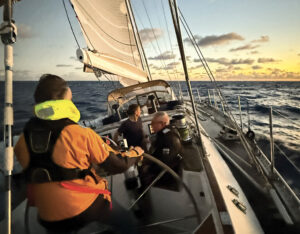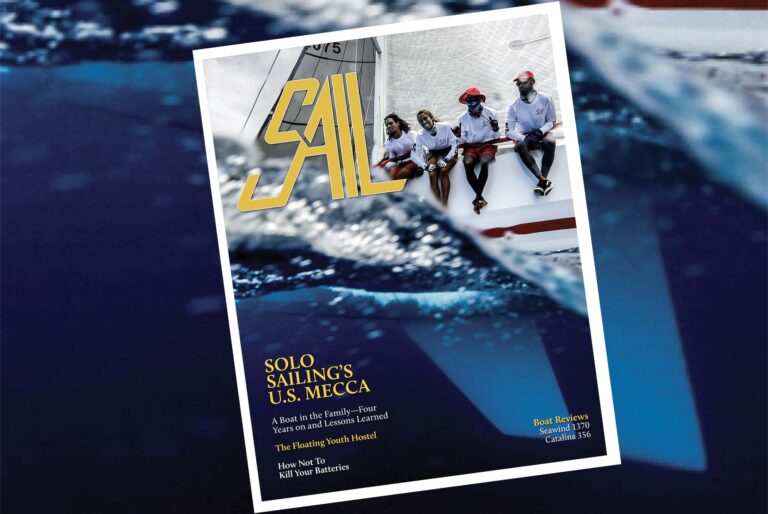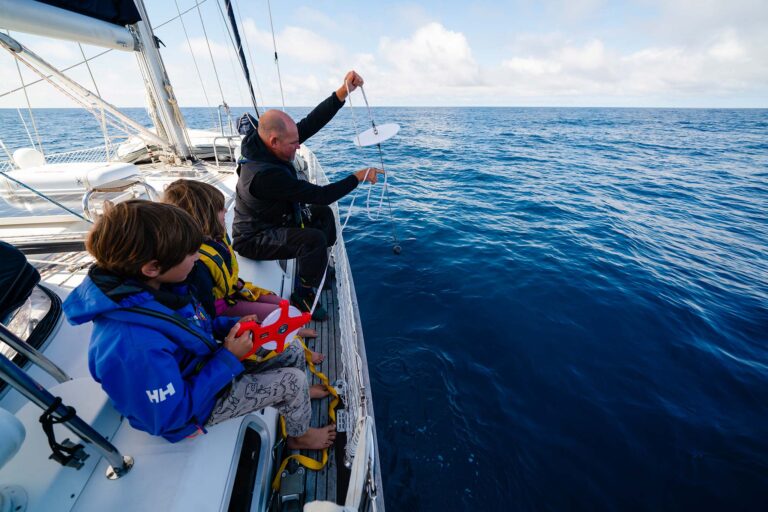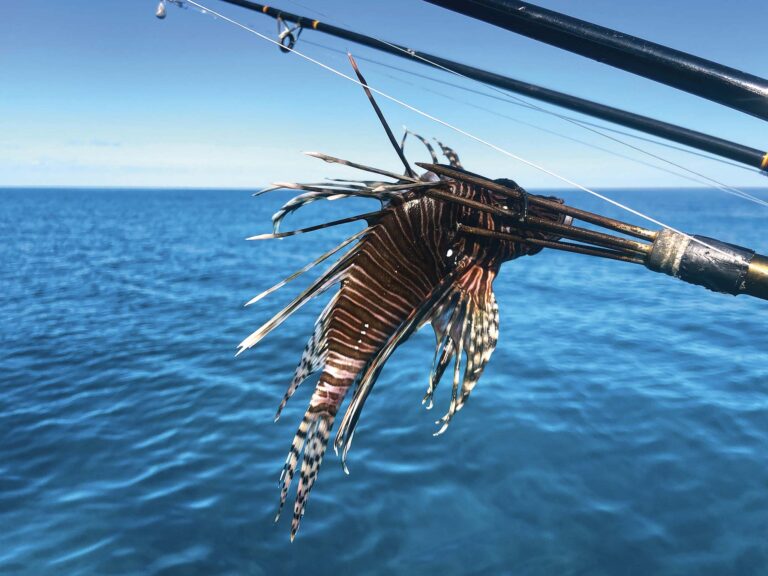A handy technique for rereeving lost halyards
By Ann Hoffner
With our Peterson 44, Oddly Enough, snug in a slip in Darwin, Australia, we stripped the gear off her deck before flying home for an extended visit. I bought three small bales of light polypropylene line and rigged messenger lines so I could rereeve the halyards when we returned. But I was distracted by the impending flight home and lost several messengers up the mast because I didn’t sew their ends securely to their halyards before hauling the halyards down.
Six months later, my first night back on board, I woke with an awful feeling. Exactly how many messengers had I lost? If it was all four, we had a problem. Without mast steps, how would I climb to the top of the mast? It was with great relief that I stuck my head out at daylight and saw the messengers for the main and spare halyards running up the mast.
Before leaving the boat I had washed the lines in tubs of fresh water and fabric softener (to help soak out the salt as well as soften them) and stored them in the saloon so they’d stay soft and clean. I ran the main and spare halyards up on their messengers, dug the bosun’s chair out of the rope locker, and tied a few basic tools to the pockets. Then I looked for a special tool I had made for the express purpose of rereeving lost halyards.
When we first bought Oddly Enough I spent many hours at the masthead in the bosun’s chair, tied off to the spare halyard crane, trying to stuff messenger lines with various small, heavy objects tied to them over the masthead sheaves so I could run all new internal halyards. Once I tried a pyramidal fishing weight, but it jammed in the masthead box and I had to pull the sheaves before I could remove it.
By trial and error I came up with a system that makes things easier. My special tool is a length of 1/8-inch parachute cord, twice the height of the mast plus 10 feet extra for handling. The cord is relatively expensive, but it makes a good messenger line because it knots easily and is flexible and durable. To one end of the line I have sewed 2 feet of window-sash chain, which is densely linked and heavy for its length. The cord is stored on a plastic electrical-wire spool, with the chain wrapped on last. Before wrapping the cord onto the spool, I leave the bitter end protruding a foot or so. This makes it easy to secure it temporarily to several loops of whipping twine, which are sewn through the end of a new halyard.
The sash chain is tied off to the bosun’s chair, and the crew on deck holds the spool, making sure the parachute cord feeds off smoothly as the rigging crew ascends the mast. Once at the masthead, I take several loops of the parachute cord loosely around my wrist to carry the weight of the chain before untying it from the chair. Then I feed the end of the chain over the sheave for the missing halyard. After about 8 inches goes over, the weight of the chain will take the rest, so be prepared to control its fall. The chain helps the line run a straight path inside the mast.
Before letting the chain drop, have the deck crew mark the cord at the height of the correct halyard exit. Then ease the cord down over the sheave until the mark reaches the masthead. At this point, the chain should be opposite the halyard exit. The crew on deck should have a magnet on an extendable stalk; these are available at auto-parts stores and are also handy for retrieving dropped items from bilges. The deck crew can reach in with the magnet and fish the chain out the exit. The halyard is then made fast to the end of the cord and can be pulled over the masthead sheave and finally out the exit.
I use sash chain because it is narrow and heavy. Any chain attractive to a magnet will do, but open links tend to kink up and jam, and if the chain is too light it will hang up inside the mast. I store the spool in the ready-to-run position in case a halyard breaks or is otherwise lost at sea. If you’re stepping your mast, make sure at least one external halyard is rigged to start you up the mast if you don’t have steps.
If more than one halyard needs rereeving, sew a loop in the bitter end of each one that needs to go up the mast. Then the deck crew can retie the messenger line to the next halyard, and the chain can be sent back up on a spare halyard.
Ann Hoffner and Tom Bailey are currently cruising in the Indian Ocean.










